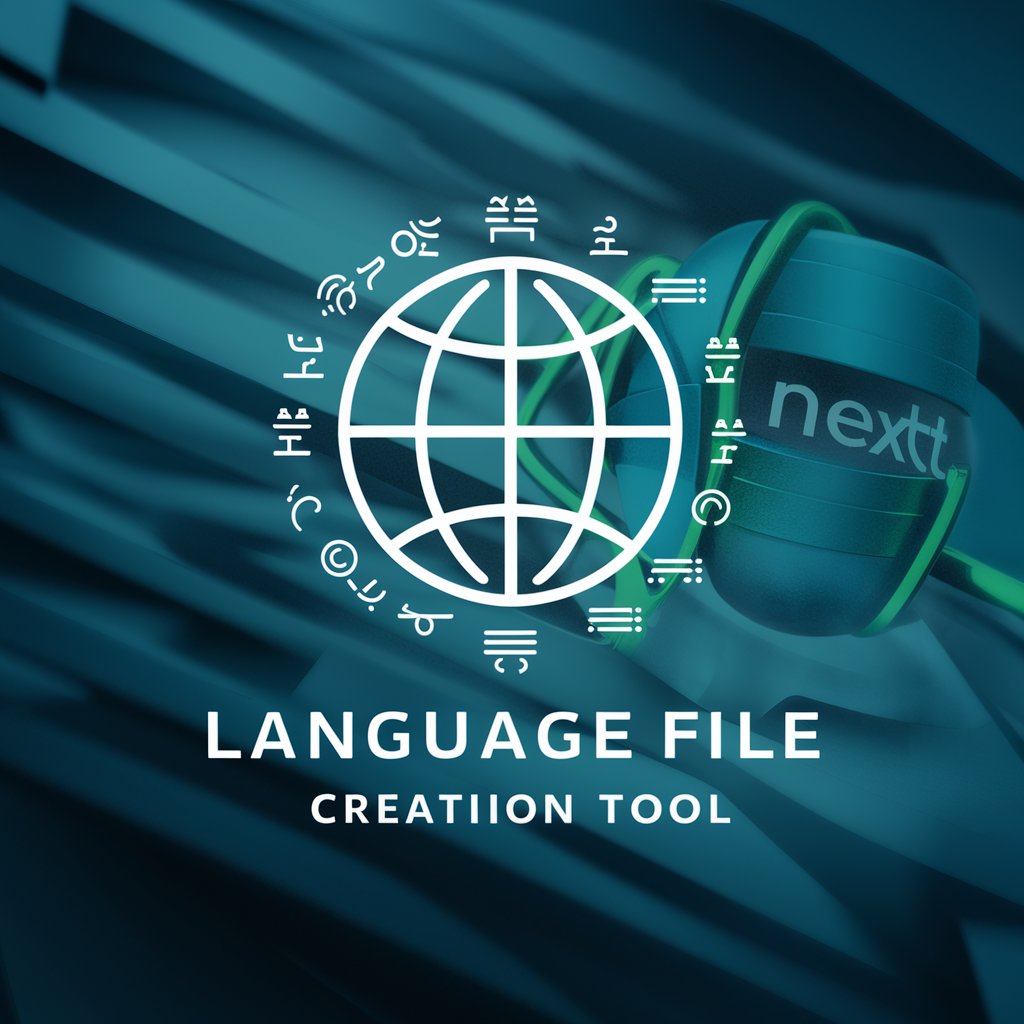Next.js i18n Helper - Next.js Language Support

Welcome to the Next.js i18n Helper!
Simplify Next.js Internationalization
How do I structure my Next.js language files for multiple locales?
What is the best way to integrate internationalized routing in a Next.js project?
Can you guide me on setting up localization for a multilingual Next.js application?
What are the steps to configure language preferences and routing in Next.js?
Get Embed Code
Introduction to Next.js i18n Helper
Next.js i18n Helper is designed to assist developers in integrating internationalization (i18n) capabilities into their Next.js projects. It streamlines the process of creating and managing language files and routes, ensuring a seamless user experience across different locales. By automating and simplifying the complexities associated with i18n routing, locale detection, and content translation, it enables developers to focus on building feature-rich, globally accessible applications. For example, if a developer aims to launch a multilingual e-commerce site that supports English, French, and Spanish, Next.js i18n Helper can guide them in structuring their project to dynamically serve content in the user's preferred language, including handling URL routing for different language versions of the site. Powered by ChatGPT-4o。

Main Functions of Next.js i18n Helper
Locale Detection and Routing
Example
Automatically redirecting users to their browser's preferred language version of the website, such as redirecting to '/fr/products' for French-speaking users.
Scenario
In a scenario where a global online retailer wants to enhance user experience by serving localized content, Next.js i18n Helper can detect the user's language preferences through the Accept-Language request header and configure routes accordingly.
Dynamic Language File Management
Example
Facilitating the creation and maintenance of language-specific files (e.g., dictionaries/en.json for English and dictionaries/fr.json for French) that store translated strings for the UI.
Scenario
For a multilingual blog platform, Next.js i18n Helper assists in organizing and accessing the correct translation files based on the current locale, ensuring that posts and UI elements are displayed in the correct language.
Static Generation and Server-side Rendering Support
Example
Enabling static generation of pages for different locales to improve loading times and SEO, while also supporting server-side rendering for dynamic content.
Scenario
A tourism website wants to provide fast, SEO-friendly pages in multiple languages. Next.js i18n Helper aids in generating static pages for each locale, such as '/en/about' and '/es/about', while also allowing for dynamic content fetching in the server-rendered pages.
Ideal Users of Next.js i18n Helper Services
Web Developers and Development Teams
Individuals or teams developing web applications with Next.js who aim to reach a global audience. They benefit from Next.js i18n Helper by simplifying the process of adding multilingual support, enhancing the user experience for international users.
Product Managers and Business Stakeholders
Professionals looking to expand their product's market reach by making it accessible in multiple languages. Next.js i18n Helper allows them to efficiently implement i18n strategies, contributing to increased user engagement and market penetration.
Content Creators and Marketers
Individuals responsible for creating and managing content who need to ensure that it resonates with users in different regions. By using Next.js i18n Helper, they can easily manage localized content, making it more relevant and impactful.

How to Use Next.js i18n Helper
Start Your Free Trial
Visit yeschat.ai for a complimentary trial, accessible instantly without the need for login or a ChatGPT Plus subscription.
Specify Your Project's Languages
Identify and list the languages your Next.js project needs to support, considering both primary languages and regional variations (e.g., en-US, fr-CA).
Structure Your Language Files
Organize your translation files by language within your project directory, using a consistent naming convention like 'en.json' for English, 'fr.json' for French.
Integrate i18n in Your Next.js Project
Configure Next.js to use the i18n routing capabilities by setting up the internationalized routing in your 'next.config.js' file.
Test and Optimize
Regularly test your project with different language settings to ensure translations load correctly and optimize the user experience for each locale.
Try other advanced and practical GPTs
MQL4 Coder
Automate your Forex trading with AI

四张图GPT
Bringing Ideas to Visual Reality with AI

Infinity W-connect Manual Mate
Empowering operations with AI insights

PerrineBot
Streamlining financial comparisons with AI

Simpsort
Explore The Simpsons with AI-powered Ned Flanders

animeIMG
Transform images into anime effortlessly.

Audax AI Agent Refinement Specialist
Refine AI agents with precision.

"Abogada"
Simplifying Law with AI Technology

Career Navigator
Empowering Your Career Journey with AI

成语接龙
Automate Your Idiom Mastery

名前作り(NaMeister ナマイスター)
Craft Names with AI, Embrace Fortunate Futures

完了,芭比Q了,我被美女包围了(AI同人)
Engage with AI-powered beauties

FAQs about Next.js i18n Helper
What is Next.js i18n Helper?
Next.js i18n Helper is a tool designed to assist in creating and managing language files for Next.js projects, simplifying the process of adding internationalization support.
How does Next.js i18n Helper handle different locales?
The tool assists in structuring language files and configuring Next.js for different locales, ensuring the application dynamically loads the correct translations based on user preferences.
Can Next.js i18n Helper support dynamic content translation?
Yes, it provides guidance on dynamically loading translations for content, enabling real-time language switching without reloading the application.
Is there a limit to the number of languages Next.js i18n Helper can support?
No, the tool is designed to accommodate as many languages as your project requires, offering flexibility for global projects.
How does Next.js i18n Helper improve SEO for multilingual sites?
By facilitating the creation of locale-specific routes and optimizing content for different languages, it enhances the visibility of multilingual content in search engines.
